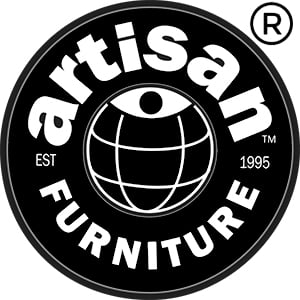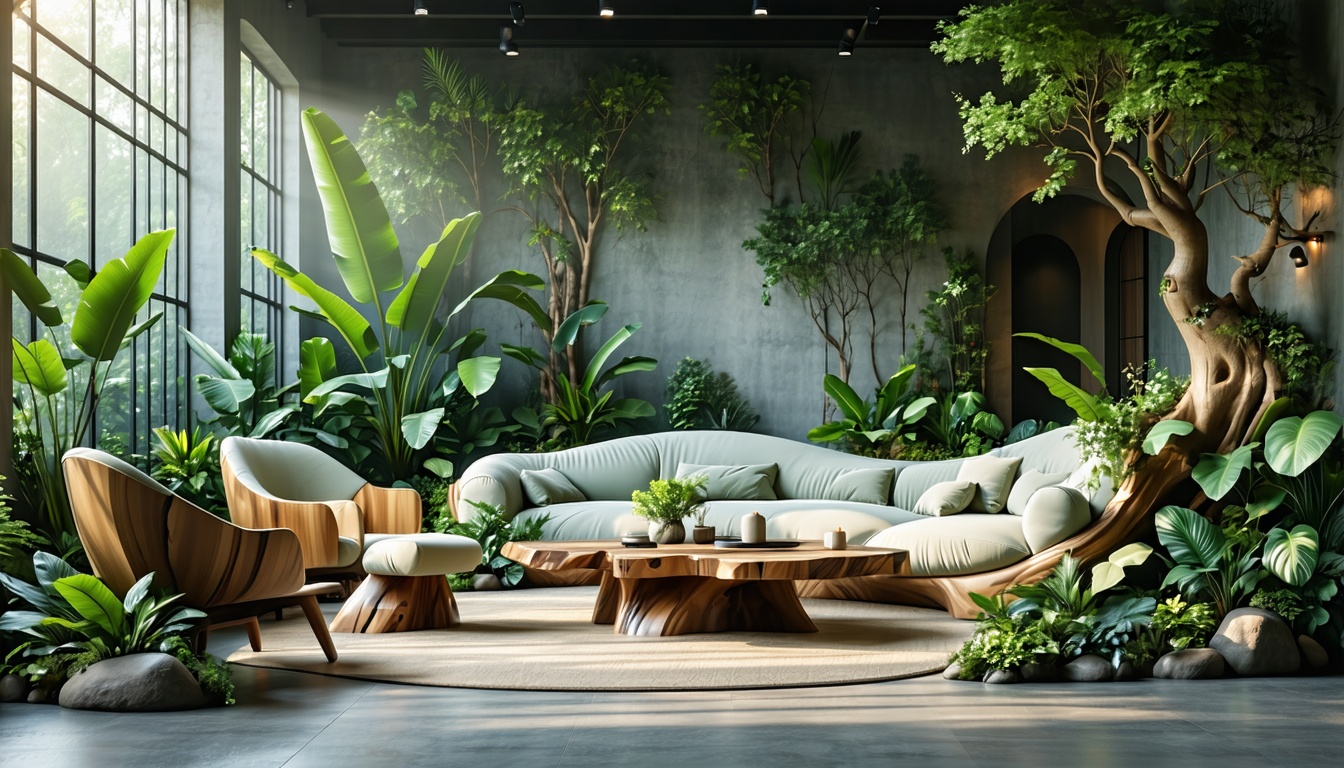Embracing Organic Furniture Design
Introduction to Organic Shapes
Organic shapes in furniture design are becoming increasingly popular among homeowners. These shapes often mimic forms found in nature, including curves, waves, and soft edges. By incorporating these designs, living spaces can achieve a modern yet timeless feel. Organic shapes create an inviting atmosphere, enhancing both aesthetics and functionality in homes.
Designers emphasize that furniture with organic forms, such as curved sofas and round coffee tables, contributes to a more relaxed environment. These pieces offer a sense of flow that encourages conversation and interaction. The integration of soft, rounded shapes allows for a seamless transition between different areas in the home, bridging the gap between indoor and outdoor spaces. Incorporating natural materials like wood, bamboo, and rattan further emphasizes this connection to nature.
| Organic Shape Type | Description | Functional Benefit |
|---|---|---|
| Curved Sofa | A soft-edged seating option that promotes interaction | Creates a cozy conversational area |
| Round Coffee Table | A table with no sharp corners to navigate | Enhances movement and flow in a living space |
| Organic Accent Chair | Chairs with curvy lines that provide comfort | Adds visual interest while ensuring relaxation |
Homeowners interested in implementing these aesthetics should explore curved furniture ideas and consider modern curved furniture designs to inspire their spaces.
Aesthetic Appeal of Curved Furniture
Curved furniture offers significant aesthetic appeal, transforming living spaces into warm, welcoming environments. The absence of sharp lines resonates with natural forms, promoting a sense of serenity and harmony. Curved pieces create a softer, more inviting look, making them ideal for cozy gathering spaces.
Another advantage of curved furniture is its versatility; these pieces can fit seamlessly into various layouts and design styles, from modern minimalist to rustic chic. Homeowners can select unique designs that add personality to their interiors. This trend in design allows individuals to express themselves through their furnishings.
The intricate textures and patterns inspired by nature can enhance these organic shapes. Furniture that combines organic curves with textured surfaces, such as heavily textured upholstery alongside smooth finishes, creates a visually stimulating experience. Homeowners looking for distinctive qualities can find inspiration from unique curved furniture pieces that emphasize this aesthetic.
As sustainability becomes a growing concern, many homeowners are turning to sustainable curved furniture options. By utilizing pieces that incorporate natural materials, they can reinforce their connection to nature within their interiors while contributing to eco-friendly practices.
Incorporating Nature in Home Decor
Incorporating elements of nature in home decor not only enhances aesthetic appeal but also creates a calming atmosphere. The use of earthy tones, natural materials, and textures inspired by the outdoors plays a crucial role in this nature-inspired furniture design.
Earthy Tones and Color Schemes
Using earthy tones in decor, such as shades of green, brown, and beige, creates a serene environment. These colors mimic natural landscapes and help foster a sense of tranquility within a living space. Additionally, the flexibility to add vibrant pops of color within an earthy palette allows for personalized expressions without overwhelming the senses.
| Color Type | Example Shades |
|---|---|
| Greens | Olive, Sage, Forest |
| Browns | Chestnut, Walnut, Beige |
| Neutrals | Sand, Cream, Taupe |
To explore more about different ways to incorporate these color schemes, refer to our selection of curved furniture ideas.
Natural Materials in Furniture Design
Incorporating natural materials like wood, stone, bamboo, cork, and rattan helps bridge the gap between indoor and outdoor spaces. These materials not only provide durability but also enhance the organic look of a room.
| Material | Benefits |
|---|---|
| Wood | Warmth and texture, various finishes |
| Stone | Durability and elegance, unique patterns |
| Bamboo | Sustainable, lightweight, and stylish |
| Cork | Eco-friendly, sound-absorbing, soft texture |
| Rattan | Lightweight, flexible, and adaptable |
Choosing eco-friendly furniture is akin to voting for the environment with each piece brought into the home. This decision contributes to a sustainable lifestyle, delivering both aesthetic and ethical benefits. For more sustainable design options, check our article on sustainable curved furniture options.
Textures and Patterns Inspired by Nature
Adding textures and patterns inspired by nature can significantly enhance visual interest in a space. Utilizing heavily textured pieces alongside smoother surfaces creates a balanced sensory experience that reflects the diversity of the natural world. For instance, incorporating flat weaves alongside plush textiles can maintain an authentic natural vibe.
| Texture Type | Description |
|---|---|
| Heavily Textured | Provides depth and tactile interest |
| Smooth Surfaces | Offers contrast, versatility in styling |
| Flat Weaves | Maintains simplicity, complements layered designs |
This integration of varying textures not only captures the essence of nature but also promotes comfort and livability. To discover unique ways to blend textures, explore our features on unique curved furniture pieces.
By thoughtfully incorporating earthy tones, natural materials, and textures, homeowners can create inviting and enriching living spaces that celebrate nature through effective furniture design.
Biophilic Furniture Design
Biophilic furniture design emphasizes the connection between humans and nature by integrating natural elements into interior spaces. This approach is gaining traction among homeowners looking to enhance their living environments with nature-inspired elements.
Introduction to Biophilic Design
Biophilic design aims to improve human interactions with the natural world by incorporating natural elements into built environments. Research indicates that exposure to these natural elements can provide health benefits comparable to spending time outdoors. Elements such as natural light, plants, and organic shapes create spaces that foster a deeper connection to nature.
Benefits of Biophilic Interior Design
The advantages of biophilic interior design are numerous. Incorporating natural elements can lead to improved health outcomes, including:
- Enhanced concentration and creativity
- Reduced stress levels and lower heart rate
- Improved circadian rhythms and overall comfort
The integration of these elements contributes to a living environment that promotes well-being. For homeowners interested in receiving both aesthetic appeal and functional benefits, biophilic furniture designs can significantly enhance one’s living space.
| Health Benefits | Description |
|---|---|
| Improved Concentration | Natural elements can heighten focus and productivity in workspaces. |
| Stress Reduction | Exposure to nature diminishes anxiety and promotes relaxation. |
| Better Sleep | Enhanced circadian systems contribute to healthier sleep patterns. |
Principles of Biophilic Furniture
Biophilic furniture design adheres to established principles that guide the integration of natural elements. These include:
- Maximizing Visual Connections: Ensures that furniture arrangements promote visibility to natural landscapes and elements.
- Utilizing Natural Materials: Encourages the use of materials such as wood and stone to substitute synthetic alternatives.
- Incorporating Natural Light: Designs that allow for ample daylighting not only illuminate spaces but also support mood enhancement.
- Integrating Plants and Vegetation: Introducing indoor plants promotes health and well-being while also contributing to a vibrant aesthetic.
- Using Natural Patterns and Textures: Incorporates organic shapes within furniture, creating an inviting and soothing atmosphere.
- Adaptive Design: Furniture that can be rearranged or customized fosters flexibility in living spaces.
- Choosing a Suitable Color Palette: Selecting colors inspired by nature can evoke calm and comfort, enhancing the atmosphere of a room.
For those exploring curved furniture ideas in their home, understanding the principles of biophilic design can help create balanced and inviting spaces. Curved furniture pieces that adhere to these principles not only enhance aesthetic appeal but also contribute to a healthier environment. Homeowners are encouraged to explore modern curved furniture designs and sustainable curved furniture options that embody the essence of biophilic furniture design.
Examples of Nature-inspired Furniture
Homeowners are increasingly drawn to nature-inspired furniture designs that not only enhance aesthetic appeal but also promote a harmonious environment. This section highlights key examples, including rattan furniture designs, the use of sustainable materials, and innovative biophilic furniture solutions.
Rattan Furniture Designs
Rattan furniture has become synonymous with biophilic design due to its organic appeal and durability. A standout example is the Nadia double bed, made from natural rattan fabric. This bed showcases rattan stalks of varying thicknesses, creating a light and airy design with a distinctive shape that seamlessly integrates into both modern and traditional settings.
| Feature | Description |
|---|---|
| Material | Natural Rattan |
| Durability | Resistant to damage |
| Design | Airy and distinctive shape |
Incorporating rattan furniture in living spaces provides not only style but also a connection to nature, bridging the gap between indoor comfort and outdoor aesthetics. For more inspiration, explore our curved furniture ideas.
Sustainable Materials in Furniture
Sustainability is a key principle in the design of nature-inspired furniture. Utilizing materials such as reclaimed wood, bamboo, and cork can significantly reduce environmental impact. A notable example is the Teak Root Floating Vanity, crafted from the roots of fallen teak trees. This innovative piece embodies the idea that one person’s waste can be transformed into a work of art, demonstrating the potential for eco-friendly design.
| Material | Benefit |
|---|---|
| Reclaimed Wood | Reduces deforestation |
| Bamboo | Fast-growing and renewable |
| Cork | Sustainably harvested |
By choosing furniture made from sustainable materials, homeowners not only beautify their spaces but also contribute to environmental conservation. For a wider range of eco-friendly options, check out our sustainable curved furniture options.
Innovative Biophilic Furniture Solutions
Biophilic design seeks to strengthen the connection with nature through furniture that incorporates natural elements. An example of this is the GINKGO side table from ALMA de LUCE’s Nature Collection. This table embodies organic shapes and textures that evoke a sense of tranquility and harmony within living spaces.
Key principles of biophilic furniture include:
| Principle | Description |
|---|---|
| Natural Materials | Use of materials like wood and stone |
| Natural Light | Incorporating designs that maximize light |
| Plant Integration | Creating space for greenery |
These design elements not only enhance the aesthetic appeal but can also provide health and environmental benefits. For creative and functional options in this trend, visit our section on modern curved furniture designs and unique curved furniture pieces.
By integrating these nature-inspired furniture designs, homeowners can cultivate living spaces that are both inviting and reflective of the natural world.

